What is On-Page SEO and Why is it Important?
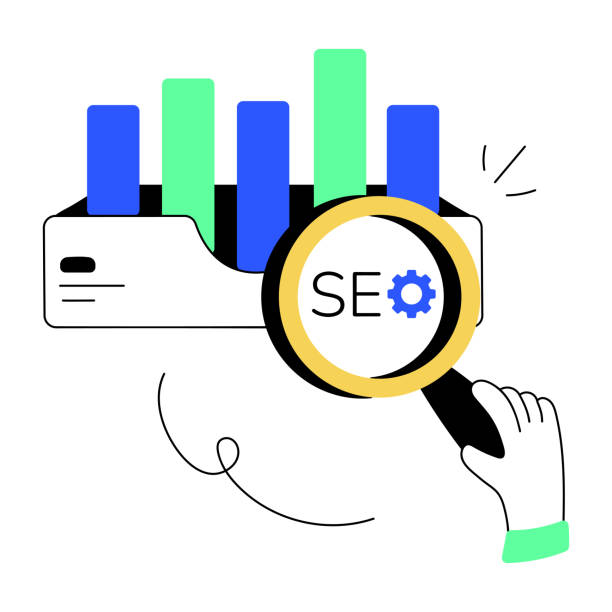
On-Page SEO refers to a set of actions you take within your website to improve your site’s ranking in Google search results and other search engines.
These actions include optimizing content, site structure, HTML tags, and other technical factors.
The importance of On-Page SEO lies in the fact that it helps search engines better understand the topic and content of your pages, and as a result, ranks your website higher in search results.
A website without strong #On_Page_SEO is like a house without a solid #foundation; no matter how beautiful and attractive it is, it will be vulnerable to storms (online competitors).
In fact, On-Page SEO is the cornerstone of your #SEO_strategy, and without it, your efforts for Off-Page SEO alone will not be sufficient.
Suppose you produce the best content in the field of selling #home_appliances, but if your site’s On-Page SEO is weak, Google cannot properly determine what your page is about, and as a result, it will not show it to users who are looking for “buying a refrigerator” or “washing machine price.”
This means missing countless opportunities to attract traffic and increase sales.
On-Page SEO is not just about using keywords; it also includes creating a great user experience, optimizing site speed, and ensuring that your site is optimized for mobile.
In today’s competitive world, On-Page SEO is a necessity, not an option.
By optimizing your site for search engines, you can attract more traffic, improve your site’s ranking, and ultimately achieve your business goals.
On-Page SEO is an ongoing process and should be regularly reviewed and updated to stay ahead of the competition.
Are you tired of losing customers due to poor e-commerce website design? With Rasaweb, solve this problem forever!
✅ Increase sales and visitor-to-customer conversion rates
✅ Smooth and attractive user experience for your customers⚡ Get free consultation
Keyword Research – The Beating Heart of On-Page SEO
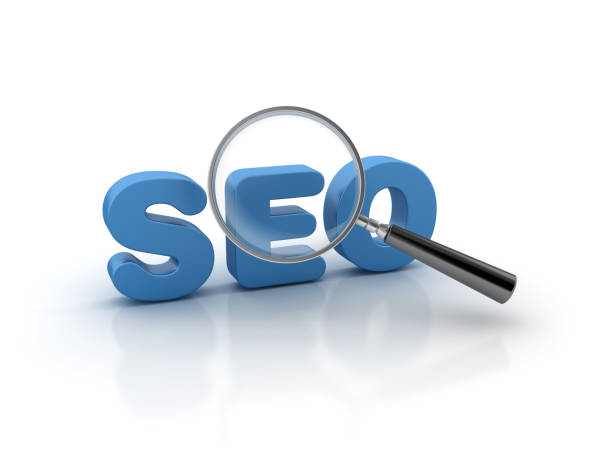
Keyword research is the most important step in On-Page SEO.
Without identifying the right keywords, your efforts to optimize content and other site elements will be useless.
Keywords are the phrases that users enter into search engines to find the information, products, or services they need.
The goal of keyword research is to identify these phrases and use them in your site’s content in a way that search engines can easily understand the topic of your pages.
To do keyword research, you can use various tools such as Google Keyword Planner, Ahrefs, and SEMrush.
These tools help you to obtain the search volume of different keywords, the level of competition, and other important information.
When choosing keywords, pay attention to two important points: relevance to the site’s topic and the level of competition.
The selected keywords should be directly related to the topic of your site, and at the same time, the level of competition for them should not be too high.
In other words, you should look for keywords that have both good traffic and a high chance of ranking.
After identifying the appropriate keywords, you should use them strategically in your site’s content.
Keywords should be placed in the page title, meta descriptions, headings, body text, and other site elements.
But be aware that excessive use of keywords (Keyword Stuffing) can backfire and cause your site to be penalized by Google.
Your main goal should be to create valuable and relevant content for users, not just to deceive search engines.
Using keywords correctly in On-Page SEO is like the right seasoning in a dish that makes it taste better.
Content Optimization – The King of On-Page SEO
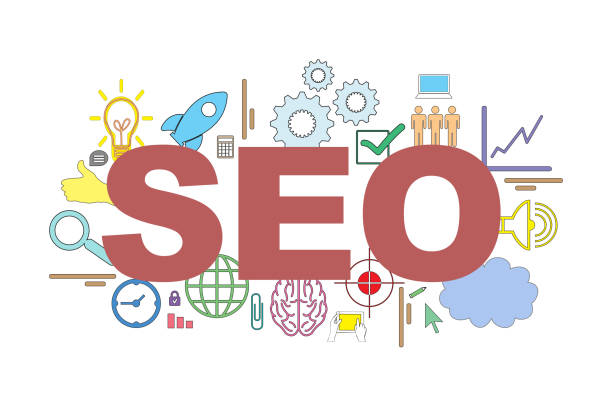
Content is king! This famous phrase in the world of SEO shows the great importance of content in ranking sites.
High-quality and valuable content not only attracts users but also helps search engines understand the topic and credibility of your site.
Optimizing content for On-Page SEO includes creating unique, relevant, comprehensive, and engaging content.
Your content should answer users’ questions, solve their problems, and provide them with useful information.
To optimize content, consider the following points: Use appropriate keywords in the page title, headings, and body text.
Organize your text in a readable and orderly manner; use short paragraphs, lists, and images to break up the text.
Use relevant internal and external links in your content; internal links help search engines understand the structure of your site, and external links add to the credibility of your site.
Update your content regularly; old and outdated content loses its value and can harm your site’s ranking.
Producing valuable content is a long-term investment that will ultimately have a very good return.
A site that has strong and relevant content naturally attracts more traffic and achieves a higher ranking in search results.
Here are two tables to better understand the content strategy:
| Content Type | Goal | Format |
|---|---|---|
| Blog Article | Inform, educate, attract traffic | Text, image, video |
| Product Page | Introduce the product, increase sales | Text, image, video, technical specifications |
| Landing Page | Convert visitors into customers | Text, image, registration form |
| Video | Attract audience, educate, entertain | Video, audio, text |
| Element | Description | SEO Importance |
|---|---|---|
| Page Title | Main title of the page | Very High |
| Meta Description | Summary of the page content | High |
| Headings | Titles of different sections of the page | Medium |
| Body Text | Main body of the page content | Very High |
URL Structure – Friendly Addresses for Search Engines
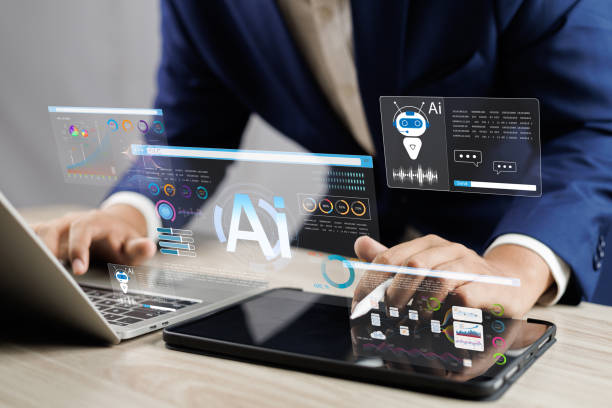
The URL structure or the address of the site pages is another important factor in On-Page SEO.
Friendly URLs help search engines and users to better understand the topic of the page.
A friendly URL is short, descriptive, and contains relevant keywords.
Avoid using long, complex URLs that contain unnecessary characters.
For example, instead of using the following URL:
www.example.com/page?id=12345&category=products
Use the following URL:
www.example.com/products/laptop-dell-xps
As you can see, the second URL is much clearer and more descriptive, and it is easy to understand that the page is about a Dell XPS laptop.
When creating a URL, consider the following points: Use relevant keywords.
Use a hyphen (-) to separate words.
Use lowercase letters.
Avoid unnecessary numbers and characters.
Try to keep the URL as short as possible.
A proper URL structure not only helps your site’s SEO but also improves the user experience.
Users who see clear and descriptive URLs can easily navigate your site and find the pages they are looking for.
Are you annoyed by losing customers who have visited your site to buy?
Rasaweb is your expert solution for having a successful online store.
✅ Dramatic increase in your online sales
✅ Creating trust and professional branding with customers⚡ Get free consultation from Rasaweb experts!
Title Tags – First Impression

Title Tags are the first thing users see in search results.
The title tag is the main title of your page that is displayed at the top of the browser and in search results.
A good title tag should be attractive, descriptive, and contain the page’s main keyword.
Title tags play a very important role in attracting users and increasing the click-through rate (CTR).
If your title tag is not attractive and relevant, users are likely to pass your page and go to your competitors.
When writing title tags, consider the following points: Use the page’s main keyword in the title tag.
Keep the title tag as short as possible (about 50-60 characters).
Write the title tag attractively and descriptively.
Avoid repeating keywords in your title tag.
Each page of your site should have a unique title tag.
Title tags in On-Page SEO are like the storefront of a shop that attracts customers inside.
The more attractive and eye-catching your storefront, the more customers enter your shop.
Meta Descriptions – Attractive Summary

Meta Descriptions are a short summary of your page’s content that is displayed below the title tag in search results.
The meta description is an opportunity for you to tell users what your page is about and why they should click on it.
The meta description does not directly affect your site’s ranking, but it can significantly increase the click-through rate (CTR).
The more attractive and relevant your meta description, the more users will click on your link and enter your site.
When writing meta descriptions, consider the following points: Keep the meta description as short as possible (about 150-160 characters).
Write the meta description attractively and descriptively.
Use relevant keywords in the meta description.
Use a Call to Action in the meta description (for example: “Buy Now!”).
Each page of your site should have a unique meta description.
The meta description is an opportunity for you to convince users that your page is the best answer to their questions.
Make good use of this opportunity.
Optimizing meta descriptions is an important aspect of On-Page SEO that should not be overlooked.
A good meta description can make the difference between a click and a lost user.
Image Optimization – Beyond Beauty

Image optimization is another important aspect of On-Page SEO that is often overlooked.
Images play a very important role in the attractiveness and engagement of users with your site.
But if your images are not properly optimized, they can slow down your site and harm your site’s ranking.
To optimize images, consider the following points: Use the appropriate format for images (JPEG for photos and PNG for graphics).
Reduce the image file size (use image compression tools).
Use a descriptive file name for images (instead of “IMG_1234.jpg”, use “laptop-dell-xps.jpg”).
Use the Alt tag for images (the Alt tag is text that is displayed if the image does not load and helps search engines understand the topic of the image).
Optimized images not only improve your site’s speed but also help search engines better understand the topic of your pages and, as a result, improve your site’s ranking.
Image optimization is a key aspect to improve On-Page SEO, which can actually make your site optimized and useful.
Site Speed – Limited User Patience

Site speed is one of the most important factors in user experience and SEO.
Today’s users have very little patience, and if your site doesn’t load within a few seconds, they quickly leave it and go to your competitors.
Google also considers site speed as an important factor in ranking sites.
A site with high speed will achieve a better ranking in search results.
To improve your site speed, you can take the following actions: Use quality hosting.
Optimize your images.
Use a Cache system.
Use CDN (Content Delivery Network).
Optimize your HTML, CSS, and JavaScript codes.
Use site speed optimization plugins.
Site speed is a competitive factor, and a site with high speed has a better chance of attracting traffic and converting visitors into customers.
Effective On-Page SEO should effectively improve site speed.
Optimizing site speed is one of the technical aspects of On-Page SEO that should not be overlooked.
A site that is fast and smooth not only satisfies users but also makes search engines happy.
Did you know that your company’s website is the first point of contact for 75% of potential customers?
Your website is the face of your brand. With Rasaweb’s corporate website design services, create an online presence that builds customer trust.
✅ Create a professional and lasting image of your brand
✅ Attract target customers and increase online credibility
⚡ Get free consultation from Rasaweb experts!
Responsive Design – Mobile First
![]()
Responsive Design means designing a website that automatically adapts to the screen size of different devices (mobile, tablet, laptop, etc.).
Today, more than half of web traffic comes to sites through mobile devices.
Therefore, having a responsive website is essential.
Google also considers responsive design as an important factor in ranking sites.
A site that is not optimized for mobile will get a lower ranking in search results.
To make sure your site is responsive, you can use Google’s Mobile-Friendly Test tool.
If your site is not responsive, you should redesign it or use a responsive template.
Responsive design not only improves the user experience on mobile devices but also helps search engines better understand your site and, as a result, improve your site’s ranking.
Responsive design is an important part of On-Page SEO.
Internal Linking – Navigating the Site
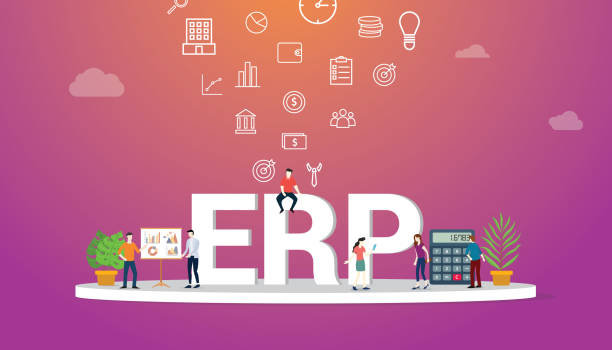
Internal linking means creating links between different pages of your own site.
Internal links help search engines understand the structure of your site and find important pages of your site.
Internal links also help users to easily navigate your site and find the information they are looking for.
For internal linking, consider the following points: Use descriptive and relevant Anchor Text.
Link to important pages of your site.
Put internal links naturally in your content.
Avoid creating too many unnecessary links.
Proper internal linking improves the structure of your site, improves the user experience, and helps search engines find important pages of your site.
Internal linking is one of the important aspects of On-Page SEO that helps you to increase the value of your content and improve your site’s ranking.
Using internal linking in On-Page SEO can greatly help site optimization and make On-Page SEO work properly.
Frequently Asked Questions
| Question | Answer |
|---|---|
| What is On-Page SEO? | On-page SEO involves optimizing elements that are directly under your control and within your website. Its goal is to help search engines better understand the content of the page and improve its ranking. |
| Why is On-Page SEO important? | On-page SEO gives clear signals to search engines about the content of the page, improves user experience, and increases the chance of attracting organic traffic. |
| What are the most important factors in On-Page SEO? | Keywords, Title Tag, Meta Description, URL structure, quality content, image optimization, and internal links are among the most important factors. |
| What is the role of the Title Tag in On-Page SEO? | The title tag is one of the most important signals for search engines and users, which specifies the main topic of the page. It should include the main keyword and be attractive. |
| How important is the Meta Description? | The meta description does not directly affect ranking, but it can improve the click-through rate (CTR) by encouraging users to click. |
| How to optimize images for On-Page SEO? | By using a descriptive file name, an appropriate Alt Text containing keywords, compression to reduce size, and correct dimensions. |
| What is the impact of Internal Links on SEO? | Internal links help search engines discover and index site pages, distribute credibility (PageRank) throughout the site, and improve user navigation. |
| Is page load speed a factor in On-Page SEO? | Yes, page load speed is a crucial factor in on-page SEO and user experience. Slower pages can lead to higher bounce rates and lower rankings. |
| What are the characteristics of quality content for On-Page SEO? | Quality content should be comprehensive, unique, relevant, reliable, readable, and fully answer the needs and questions of users. |
| How can keywords be used in content? | Keywords should be used naturally in the title, subtitles, first paragraph, body of text, and Alt Text of images. Avoid Keyword Stuffing. |
And other services of Rasa Web advertising agency in the field of advertising
Intelligent UI/UX: A fast and efficient solution to improve SEO ranking by focusing on marketing automation.
Intelligent Linking: A new service to increase campaign management through marketing automation.
Intelligent Direct Marketing: A dedicated service to grow campaign management based on intelligent data analysis.
Intelligent Linking: A combination of creativity and technology to attract customers through custom programming.
Intelligent Direct Marketing: Transform the click-through rate with the help of Google ad management.
And more than hundreds of other services in the field of internet advertising, advertising consulting and organizational solutions
Internet Advertising | Advertising Strategy | Advertorial
Resources
What is On-Page SEO? A comprehensive Ahrefs guide
,On-Page SEO: The Complete Guide – Search Engine Journal
,On-Page Optimization – Moz
,On-Page SEO: The Complete Guide to Site Optimization
? Do you need a reliable partner to promote your business in the digital space? Rasaweb Afarin Digital Marketing Agency paves your path to growth by providing specialized services including corporate website design, SEO and social media management.
📍 Tehran, Mirdamad Street, next to the Central Bank, South Kazerun Alley, Ramin Alley No. 6
“`




